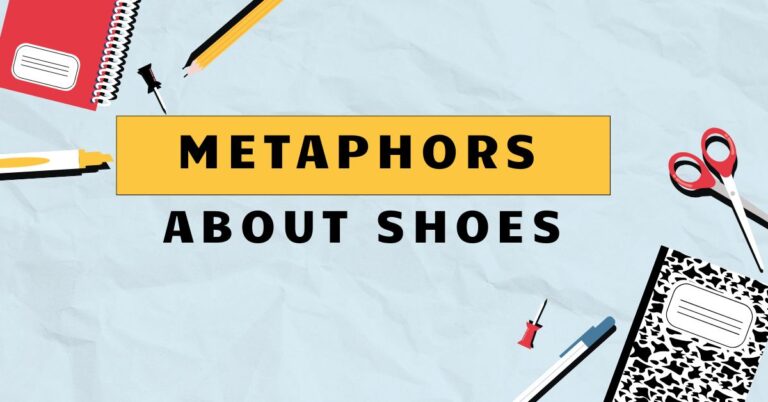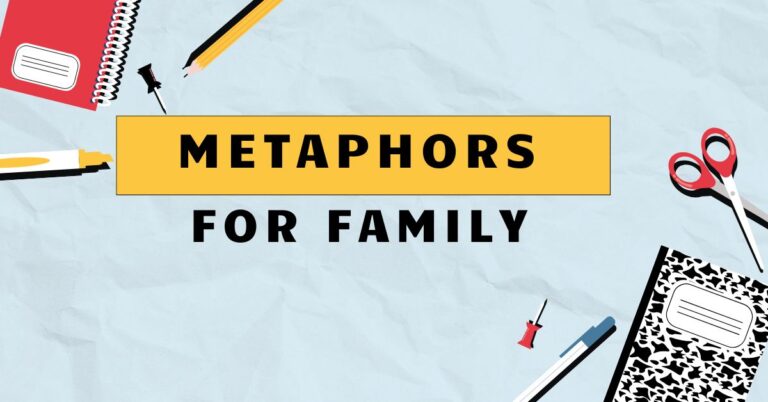29 Metaphors for Old: Understanding Figurative Language
Metaphors are powerful tools in the English language, allowing us to convey complex ideas and emotions vividly and creatively. When it comes to describing age, metaphors provide a nuanced way to express the passage of time, the accumulation of experience, and the various stages of life.
Understanding these metaphors enhances our comprehension of literature, poetry, and everyday conversations. This article explores the rich landscape of metaphors for “old,” providing definitions, examples, usage rules, and practice exercises to help you master this fascinating aspect of figurative language.
Whether you’re an English language learner, a student of literature, or simply someone who enjoys playing with words, this guide will deepen your appreciation for the art of metaphorical expression.
Table of Contents
- Introduction
- Definition of Metaphor for Old
- Structural Breakdown
- Types and Categories of Metaphors for Old
- Examples of Metaphors for Old
- Usage Rules
- Common Mistakes
- Practice Exercises
- Advanced Topics
- FAQ
- Conclusion
Definition of Metaphor for Old
A metaphor is a figure of speech that directly compares two unlike things without using “like” or “as.” It asserts that one thingisanother, creating a vivid image and suggesting a shared quality. When we use metaphors for “old,” we’re drawing parallels between the experience of aging and other concepts, such as the natural world, the passage of time, or the deterioration of objects.
These metaphors enrich our language, adding depth and emotional resonance to our descriptions of age.
Metaphors for “old” are often used to convey not just the physical aspect of aging but also the wisdom, experience, or even the vulnerabilities that come with it. They can be positive, highlighting the beauty and richness of a life well-lived, or they can be negative, focusing on decline and decay.
The choice of metaphor depends on the specific context and the desired effect. Understanding the nuances of these metaphors allows for more effective communication and a deeper appreciation of the aging process.
The function of metaphors for “old” extends beyond simple description. They evoke emotions, create connections, and offer new perspectives on a universal human experience.
For example, describing someone as an “old oak tree” suggests strength, resilience, and deep roots, while calling someone a “faded photograph” highlights the loss of vibrancy and the fading of memories. These metaphors provide a shorthand for conveying complex ideas and feelings about age.
Structural Breakdown
Metaphors for “old” typically consist of two key elements: thetenorand thevehicle. The tenor is the subject being described (in this case, “old” or a person who is old), and the vehicle is the thing to which it is being compared.
The effectiveness of a metaphor depends on the relationship between these two elements and the shared qualities they suggest.
The structure of a metaphor can be explicit or implicit. An explicit metaphor directly states the comparison, such as “He is an old oak tree.” An implicit metaphor, on the other hand, suggests the comparison without directly stating it, for example, “His roots ran deep into the community,” implying that he is like an old tree with strong connections.
Understanding the underlying structure of metaphors allows us to analyze their meaning and appreciate their artistry. By identifying the tenor and the vehicle, we can decipher the intended message and the emotional impact of the comparison.
Furthermore, recognizing explicit and implicit metaphors enhances our ability to both interpret and create effective figurative language.
Types and Categories of Metaphors for Old
Metaphors for “old” can be categorized based on the source of the comparison. Here are some common categories:
Natural Elements
These metaphors draw comparisons between age and elements of nature, such as trees, mountains, or rivers. They often emphasize resilience, wisdom, or the cyclical nature of life.
Time-Related Metaphors
These metaphors use concepts related to time, such as clocks, calendars, or historical periods, to convey the passage of years and the accumulation of experience.
Material Decay and Deterioration
These metaphors focus on the physical aspects of aging, drawing comparisons to the deterioration of objects, such as worn-out clothes, rusty tools, or crumbling buildings. They often highlight the vulnerabilities and limitations that come with age.
Seasons of Life
These metaphors use the changing seasons to represent the different stages of life, with old age often associated with winter or autumn. They emphasize the natural progression of life and the acceptance of change.
Historical References
These metaphors use historical figures, events, or artifacts to symbolize age, wisdom, or the weight of the past. They often connect individual experiences to broader historical narratives.
Examples of Metaphors for Old
Here are some specific examples of metaphors for “old,” organized by category:
Natural Elements Examples
This table provides examples of how natural elements can be used to describe old age, emphasizing aspects like resilience, wisdom, and enduring strength.
| Metaphor | Explanation |
|---|---|
| An old oak tree | Suggests strength, resilience, and deep roots. |
| A weathered mountain | Implies wisdom, endurance, and a long history. |
| A winding river | Represents the long and meandering journey of life. |
| An ancient forest | Symbolizes a wealth of knowledge and experience. |
| A craggy cliff | Conveys a sense of ruggedness and resilience in the face of time. |
| A timeless stone | Suggests enduring presence and unchanging nature. |
| An old growth forest | Represents a complex, interconnected ecosystem of experience. |
| A desert landscape | Can symbolize barrenness or a stark, unforgiving experience of aging. |
| A dormant volcano | Suggests latent power and potential for renewed activity. |
| A starlit night | Represents the quiet beauty and wisdom that comes with age. |
| A full moon | Symbolizes completeness and the culmination of a life’s journey. |
| A gentle breeze | Conveys a sense of peace and tranquility in old age. |
| A raging storm (referring to youth) | Highlights the contrast between youthful energy and the calm of old age. |
| A deep ocean | Represents the vastness of knowledge and experience accumulated over time. |
| A barren field | Symbolizes the end of productivity and the onset of decline. |
| A gnarled root | Suggests hidden strength and a deep connection to the earth. |
| A whispering wind | Conveys a sense of secrets and stories carried through time. |
| A setting sun | Represents the end of life and the fading of vitality. |
| A rolling hill | Suggests the ups and downs of life’s journey. |
| A quiet pond | Symbolizes peace, reflection, and stillness in old age. |
| A wise owl | Represents knowledge, insight, and the ability to see clearly. |
| A steadfast mountain | Conveys unwavering strength and resilience. |
| A calm sea | Symbolizes tranquility and acceptance in the later years of life. |
| An ancient cave | Represents hidden depths and the mysteries of time. |
| A weathered rock | Suggests durability and the ability to withstand hardship. |
Time-Related Examples
This table provides examples of metaphors using time-related concepts to depict old age, focusing on the passage of time and accumulated experiences.
| Metaphor | Explanation |
|---|---|
| An old clock | Represents the relentless passage of time and the ticking away of life. |
| A worn calendar | Symbolizes the accumulation of years and the weight of the past. |
| A faded photograph | Highlights the fading of memories and the loss of vibrancy. |
| An antique watch | Suggests value, craftsmanship, and a connection to history. |
| The twilight years | Represents the final period of life, approaching darkness. |
| The sunset of life | Symbolizes the end of life’s journey. |
| A bygone era | Connects the individual to a past time, emphasizing their history. |
| A living history book | Suggests a wealth of knowledge and stories from the past. |
| An aging manuscript | Represents the fragility and preciousness of memories. |
| A vintage wine | Implies that age enhances quality and value. |
| A timeless melody | Suggests enduring beauty and relevance. |
| The autumn of life | Represents the later years, characterized by reflection and harvest. |
| A well-worn path | Symbolizes a life filled with experiences and journeys. |
| A slow-burning candle | Represents the gradual decline of vitality. |
| The eleventh hour | Suggests the final stages of life, nearing the end. |
| A grandfather clock | Symbolizes tradition, reliability, and the passage of generations. |
| A tattered map | Represents a life filled with adventures and discoveries. |
| A fading echo | Suggests the diminishing impact of past events. |
| A ticking time bomb (used ironically) | Humorously highlights the anticipation of future events in old age. |
| A well-preserved relic | Implies careful maintenance and enduring value. |
| A seasoned veteran | Represents experience, resilience, and service. |
| The winter of life | Symbolizes the coldness, stillness, and finality of old age. |
| A late bloomer | Suggests that success and fulfillment can come later in life. |
| A living fossil | Represents someone who has witnessed significant historical changes. |
| A golden age | Highlights the positive aspects of aging, such as wisdom and fulfillment. |
Material Decay Examples
This table provides examples of metaphors that use the concept of material decay to describe old age, highlighting the physical aspects of aging and decline.
| Metaphor | Explanation |
|---|---|
| A worn-out shoe | Represents the wear and tear of life’s journey. |
| A rusty tool | Symbolizes diminished functionality and usefulness. |
| A crumbling building | Highlights physical deterioration and fragility. |
| A faded tapestry | Suggests the loss of vibrancy and detail over time. |
| A cracked vase | Represents the fragility and vulnerability of old age. |
| A moth-eaten garment | Symbolizes decay and neglect. |
| A tarnished mirror | Suggests a distorted reflection of the past. |
| A broken compass | Represents a loss of direction and purpose. |
| A leaky roof | Symbolizes the inability to protect oneself from the elements. |
| A faded painting | Highlights the loss of color and detail. |
| A rickety chair | Suggests instability and unreliability. |
| A threadbare carpet | Represents the wearing down of life’s experiences. |
| A dilapidated house | Symbolizes physical and mental decline. |
| A peeling wall | Highlights the visible signs of aging. |
| A rusty hinge | Suggests stiffness and difficulty in movement. |
| A shattered window | Represents vulnerability and exposure. |
| A crumbling statue | Symbolizes the loss of strength and beauty. |
| A dented shield | Represents the battles and hardships of life. |
| A well-worn book | Suggests a life filled with stories and experiences, although possibly fragile. |
| A cracked record | Represents the repetition and limitations of old age. |
Seasons of Life Examples
This table provides examples of how the seasons of the year can be used metaphorically to describe different stages of life, with a focus on old age.
| Metaphor | Explanation |
|---|---|
| The winter of life | Represents the final stage of life, characterized by coldness, stillness, and the approach of death. |
| The autumn of life | Symbolizes the later years, a time for reflection, harvest, and letting go. |
| A late autumn bloom | Suggests unexpected beauty and vitality in old age. |
| The harvest years | Represents the time to reap the rewards of a life well-lived. |
| The twilight of the year | Mirrors the twilight years of life, approaching darkness. |
| A barren winter landscape | Can symbolize loneliness and isolation in old age. |
| An Indian summer | Suggests a brief period of renewed vitality and warmth in the later years. |
| The falling leaves of autumn | Represents the letting go of attachments and the acceptance of mortality. |
| The first frost | Symbolizes the initial signs of aging and decline. |
| A winter’s sleep | Represents the quietude and rest of old age. |
| The bare branches of winter | Suggests vulnerability and exposure. |
| The gathering of the harvest | Represents the accumulation of wisdom and experience. |
| The shortening days of autumn | Symbolizes the diminishing time left in life. |
| A winter storm | Represents the challenges and hardships faced in old age. |
| The last leaves clinging to the tree | Suggests resilience and a refusal to give up. |
| The quiet of a snowy day | Represents the peace and tranquility of old age. |
Historical References Examples
This table provides examples of metaphors that use historical references to describe old age, connecting individual experiences to broader historical narratives.
| Metaphor | Explanation |
|---|---|
| A living monument | Represents someone who has witnessed significant historical events and embodies a legacy. |
| An ancient artifact | Symbolizes the preciousness and historical value of an individual’s life. |
| A relic of the past | Suggests a connection to a bygone era and a sense of historical significance. |
| A seasoned diplomat | Represents wisdom, experience, and the ability to navigate complex situations. |
| A veteran of many battles | Symbolizes resilience, courage, and the ability to overcome adversity. |
| An old sage | Represents wisdom, knowledge, and the ability to provide guidance. |
| A historical landmark | Suggests enduring presence and cultural significance. |
| A founding father/mother | Represents leadership, vision, and the establishment of lasting principles. |
| A living legend | Symbolizes extraordinary achievements and lasting impact. |
| An elder statesman/woman | Represents experience, wisdom, and the ability to provide counsel. |
| A survivor of the Great War | Highlights resilience and the ability to endure hardship. |
| A child of the Depression | Represents frugality, resilience, and a deep understanding of hardship. |
| A witness to history | Symbolizes the ability to provide firsthand accounts of significant events. |
| An ancient scroll | Represents the preservation of knowledge and stories from the past. |
| A time capsule | Suggests a connection to the past and a glimpse into a different era. |
Usage Rules
When using metaphors for “old,” it’s essential to consider the context and the intended audience. The effectiveness of a metaphor depends on its appropriateness and clarity.
Here are some guidelines:
- Choose metaphors that resonate with your audience: Consider their background, experiences, and cultural understanding.
- Be consistent with your metaphor: Avoid mixing metaphors that create confusing or contradictory images.
- Use metaphors sparingly: Overuse can diminish their impact and make your writing seem contrived.
- Ensure clarity: Make sure the connection between the tenor and the vehicle is clear and easily understood.
- Consider the connotations: Be aware of the positive and negative associations of your chosen metaphor.
For example, using the metaphor “a dinosaur” to describe an old person might be considered offensive, as it implies obsolescence and irrelevance. On the other hand, describing someone as “a vintage wine” conveys appreciation for their age and the enhanced quality that comes with time.
The key is to choose metaphors that are respectful, appropriate, and effective in conveying your intended message.
Common Mistakes
Here are some common mistakes to avoid when using metaphors for “old”:
| Incorrect | Correct | Explanation |
|---|---|---|
| He is an old young man. | He is an old soul. | “Old young man” is a contradiction. “Old soul” suggests wisdom beyond his years. |
| She is a crumbling oak tree. | She is a weathered oak tree. | “Crumbling” has negative connotations. “Weathered” suggests resilience. |
| He’s a clock running on empty. | He’s a clock winding down. | “Running on empty” implies current activity. “Winding down” suggests slowing down. |
| She is like a worn-out shoe. | She is a worn-out shoe. | Using “like” makes it a simile, not a metaphor. |
| He is an old antique microwave. | He is an antique. | The microwave is not typically associated with positive qualities of aging. |
It’s also important to avoid clichés, which are overused metaphors that have lost their impact. Instead, strive to create fresh and original metaphors that capture the essence of age in a unique and evocative way.
Practice Exercises
Test your understanding of metaphors for “old” with these exercises:
- Identify the metaphor in each sentence:
- He is a living history book.
- She is in the winter of her life.
- He’s a weathered mountain, standing tall.
- She is a faded photograph, losing clarity.
- He is an old clock, ticking away the hours.
- She’s a vintage car, still turning heads.
- He is a well-worn path, full of stories.
- She is a quiet pond, reflecting peace.
- He is an ancient forest, full of wisdom.
- She is a setting sun, painting the sky.
- Create a metaphor for “old” using the following vehicles:
- River
- Tree
- Book
- Wine
- House
- Mountain
- Clock
- Photograph
- Song
- Journey
- Rewrite the following sentences using metaphors for “old”:
- He is very old and experienced.
- She is losing her memory as she gets older.
- He has lived a long and difficult life.
- She is becoming more frail with age.
- He is full of wisdom from his many years.
- She’s reaching the final stage of her life.
- He has a lot of stories from the past.
- She is slowing down as she ages.
- He is still strong despite his age.
- She finds peace in her old age.
Answers
-
- Living history book
- Winter of her life
- Weathered mountain
- Faded photograph
- Old clock
- Vintage car
- Well-worn path
- Quiet pond
- Ancient forest
- Setting sun
- (Examples)
- He is a winding river, flowing towards the sea.
- She is an old oak tree, with deep roots and strong branches.
- He is a well-read book, filled with knowledge and stories.
- She is a vintage wine, growing richer with age.
- He is a dilapidated house, showing the wear and tear of time.
- He is a steadfast mountain, unmoving through time.
- She is a grandfather clock, ticking through generations.
- He is a faded photograph, a shadow of his former self.
- She is a timeless song, still sung through the ages.
- He is a long journey, filled with twists and turns.
- (Examples)
- He is a living encyclopedia.
- She is a faded memory.
- He is a road paved with stones.
- She is a delicate flower, wilting in the sun.
- He is a wise old owl.
- She is in the twilight of her years.
- He is a walking archive.
- She is a slow-burning ember.
- He is a sturdy oak, still standing tall.
- She is a calm sea, at peace with herself.
Advanced Topics
For advanced learners, consider exploring the following topics:
- Extended Metaphors: Analyze how a single metaphor can be developed and sustained throughout a longer piece of writing.
- Mixed Metaphors: Examine the effects of combining incompatible metaphors and how they can be used for humorous or satirical purposes.
- Cultural Differences: Investigate how metaphors for “old” vary across different cultures and languages.
- Metaphor and Symbolism: Explore the relationship between metaphors and symbols and how they contribute to deeper meaning in literature and art.
By delving into these advanced topics, you can further refine your understanding of metaphors and their role in shaping our perception of age and the human experience.
FAQ
- What is the difference between a metaphor and a simile?
A metaphor directly compares two unlike things, stating that one is the other. A simile, on the other hand, uses “like” or “as” to make a comparison. For example, “He is an old oak tree” is a metaphor, while “He is like an old oak tree” is a simile.
- Why are metaphors for “old” important?
Metaphors for “old” add depth and emotional resonance to our language, allowing us to convey complex ideas and feelings about aging in a vivid and creative way. They also help us understand different perspectives on the aging process.
- How can I create effective metaphors for “old”?
Choose metaphors that resonate with your audience, are consistent with your overall message, and are clear and easily understood. Consider the connotations of your chosen metaphor and avoid clichés.
- What are some common pitfalls to avoid when using metaphors for “old”?
Avoid contradictions, negative connotations, clichés, and mixing metaphors. Ensure that your metaphors are appropriate for the context and the intended audience.
- Can metaphors for “old” be positive?
Yes, metaphors for “old” can be positive, highlighting the wisdom, experience, and resilience that come with age. Examples include “vintage wine” and “old oak tree.”
- How do cultural differences affect metaphors for “old”?
Metaphors for “old” can vary significantly across different cultures and languages, reflecting different values, beliefs, and experiences related to aging. It’s important to be aware of these differences to avoid misunderstandings.
- Are there specific metaphors for “old” that are considered offensive?
Yes, some metaphors can be offensive, particularly those that emphasize decline, obsolescence, or irrelevance. Examples include “dinosaur” and “has-been”. It’s important to choose metaphors that are respectful and considerate.
- How can I improve my understanding of metaphors in general?
Read widely, pay attention to how metaphors are used in literature and everyday conversation, and practice creating your own metaphors. Analyze the tenor and vehicle of different metaphors to understand their underlying meaning.
- What role do metaphors play in shaping our perception of aging?
Metaphors can influence how we view aging by highlighting certain aspects of the process, such as decline, wisdom, or resilience. They can also reinforce stereotypes or challenge them, depending on the chosen metaphors.
- How do metaphors for “old” differ from literal descriptions?
Literal descriptions provide factual information about age, while metaphors use figurative language to create a more evocative and nuanced portrayal. Metaphors engage the imagination and evoke emotions in a way that literal descriptions cannot.
- What are some examples of extended metaphors for “old”?
An extended metaphor for “old” might compare a person’s life to a long and winding road, with each stage of life representing a different part of the journey. This metaphor could be developed throughout a poem or story.
- How can metaphors for “old” be used in creative writing?
Metaphors can be used to create vivid imagery, evoke emotions, and add depth to characters and settings. They can also be used to explore themes related to aging, mortality, and the human experience.
Conclusion
Metaphors for “old” offer a rich and nuanced way to express the complexities of aging. By understanding the different types of metaphors, their structural elements, and the rules governing their use, you can enhance your communication skills and deepen your appreciation for the art of figurative language.
Remember to choose metaphors that are appropriate, clear, and respectful, and to avoid common mistakes such as contradictions and clichés. By practicing your ability to identify, analyze, and create metaphors, you can unlock a powerful tool for conveying complex ideas and emotions.
Continue to explore the world of metaphors in literature, poetry, and everyday conversation. Pay attention to how different writers and speakers use metaphors to shape their message and evoke emotions.
Experiment with creating your own metaphors and seek feedback from others. With practice and dedication, you can master the art of metaphorical expression and enrich your understanding of the human experience.
The use of metaphors allows us to see old age not just as a period of decline, but as a complex and multifaceted stage of life worthy of respect and understanding.







